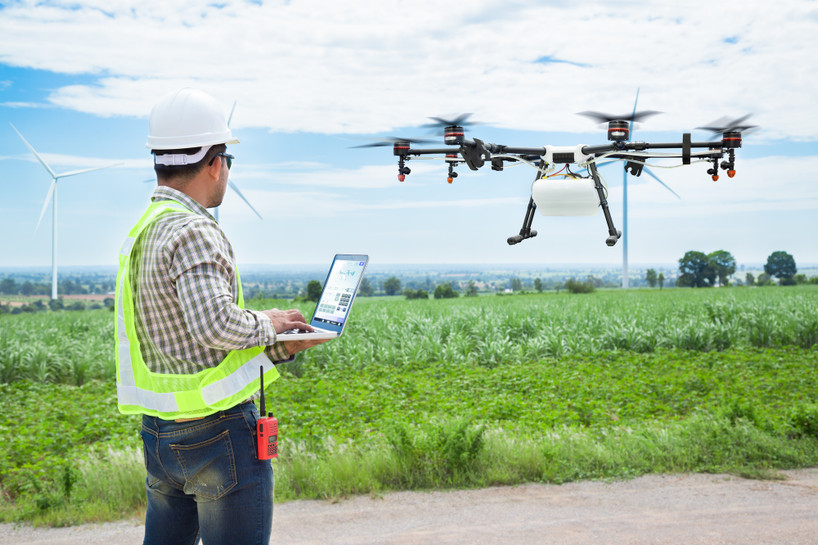The Best in Precision Agriculture Technology 2021
Between 2021 and 2026, the precision farming market is expected to grow at a compound annual growth rate of 12.6%. This growth is driven by an increase in the number of new technologies that are available, as well as increased adoption.
New precision agriculture technology can help farmers in many ways. It can increase yield, decrease waste, and lead to more efficient operations. Let’s take a look at the best agriculture technology available in 2021.
Field Mapping
Field mapping data is expected to grow because of the sheer number of applications it has. This technology leads to better planting, spraying, and harvesting decisions. Plus, it can integrate with a variety of other agricultural technologies. This will further increase the benefits it provides.
Aerial Imaging
One of the ways precision agriculture is expected to grow in 2021 is through the use of aerial imaging. Satellite imaging and drones can help make issues that are hard to see from the ground more visible. This has a variety of different applications.
It can help make crop variations easier to find. Plus, it can be used with additional precision agriculture technologies. Together, these can increase the efficiency of crop management. It can also be paired with field mapping technology to create an even more synergistic approach to management.
Water Management
The occurrence of extreme weather events has risen in recent years. This can lead to serious economic damage in many industries. The agriculture industry is particularly vulnerable. However, water management technology can help mitigate loss from these events.
Drainage system technology can identify ways to make the operation more efficient. It can analyze both surface and subsurface drainage. Plus, grading and land forming equipment now have high accuracy.
These tools help give farmers a better picture of their water management needs. This can help them better control excess water and minimize soil disturbance.
Soil Health and Sustainability
Climate change has been at the forefront of discussions from both consumers and producers within the agriculture sector. Agriculture technology can help mitigate elements contributing to climate change.
The number of incentives for on-farm carbon sequestration and sustainability is increasing. This makes mitigating climate change even more pertinent. Reduced tillage and the use of cover crops are simple ways in which farmers can increase soil health and fertility.
Sustainability goals can also be met through niche production. Meanwhile, on-farm diversification is also growing due to supply chain issues in 2020.
Smart Application
Smart application technology is an important part of precision agriculture. It can be used with other tactics to further mitigate elements contributing to climate change. For instance, smart nitrogen application can help with concerns over the release of the greenhouse gas nitrous oxide.
Crop sensing systems and input control systems ensure that enough product is applied to meet plant needs. At the same time, they help avoid overapplication.
This helps the environment by reducing the amount of material added to the soil. It is also more economical, as decreasing costs due to waste can help increase overall profit.
Autonomous equipment can be used on a larger scale for this as well. This type of equipment is more precise, as it reduces the possibility of human error. It also helps reduce labor in addition to the other benefits of smart application systems.
Data Management
Producers collect and analyze data for a wide variety of applications. But, traditional paper filing systems are difficult to organize and quickly look through. It is a lot easier to analyze and make informed decisions from responsive software than by combing through a hefty filing cabinet.
New data management systems can improve efficiency, reduce human error, and increase profits. Plus, these technologies can work across connected devices. You can sync data on crop health, work needs, and field information, among many other metrics.
Traditional data management techniques can be used to make decisions for the following year. But, new technology can help make informed decisions and adjustments within a shorter period of time. It can even allow one to react within the same season.
For example, the planting depth can be altered in response to immediate data about available moisture. This helps farmers produce healthier plants from the start.
Local Weather Data
Infield weather sensors can measure real-time weather data, including wind, rainfall, and temperature. They also have other features, including field-specific data and alarms for specific conditions.
Data sensors can be combined with data management software to make better decisions. For example, spraying, harvesting, and irrigation timing windows can be chosen for when they will be the most effective.
They also allow for one to react to immediate problems. Sometimes, one can even begin to address issues before they become problems.
Yield Monitoring and Prediction Technology
Yield monitoring and prediction technologies have become quick and accurate. As a result, more people are adopting them. Farmers can find buyers, eliminate waste, and increase profits. They can also make better decisions for the following year’s variety selection.
This farming technology can map fields and compare varieties over years. It can track infield moisture content, informing decisions to store or dry crops. Plus, it can record accurate data on the crop yield as it is harvested and loaded.
Indoor Farming
Technology for indoor farming will not affect every farmer, but it is a growing sector. Many resources are available for startups investing in produce such as lettuce and tomatoes.
Sensors and protective cultures can make indoor and vertical farming more efficient. This can further increase its application when producing food in areas limited in space.
More Efficient Production With Precision Agriculture Technology
Technology continues to improve each year, becoming more efficient and solving more problems. As precision agriculture technology continues along this path, it can pass on a range of benefits to both producers and consumers.
Take a look at the precision agriculture technology you can implement for better yields this season.
 US Dollars
US Dollars
 Canadian Dollar
Canadian Dollar
 Australian Dollar
Australian Dollar
 Euro
Euro

